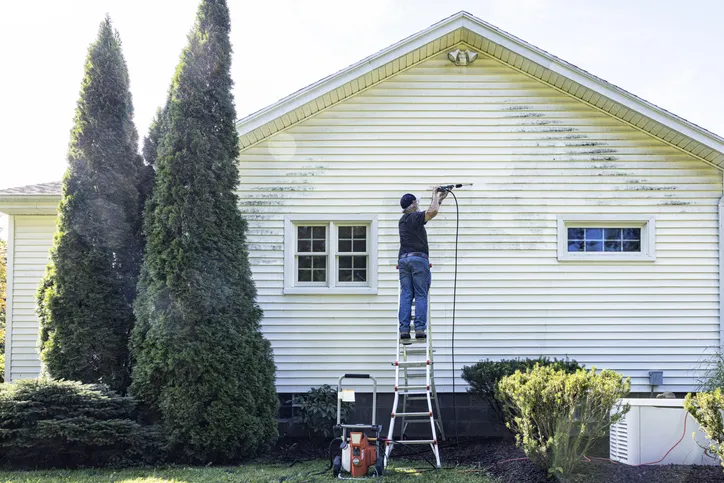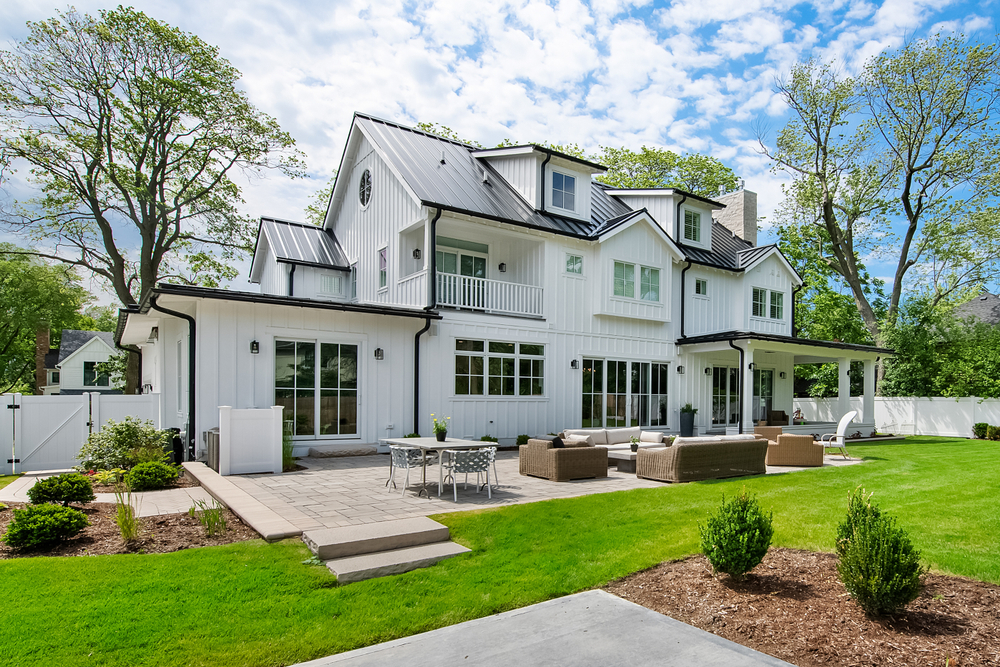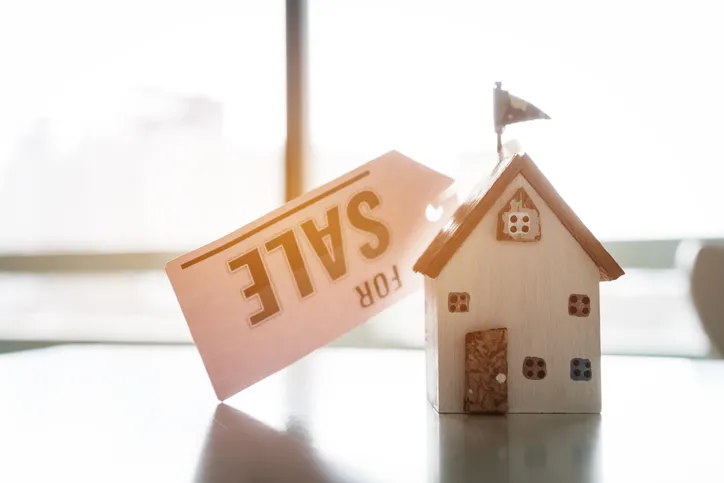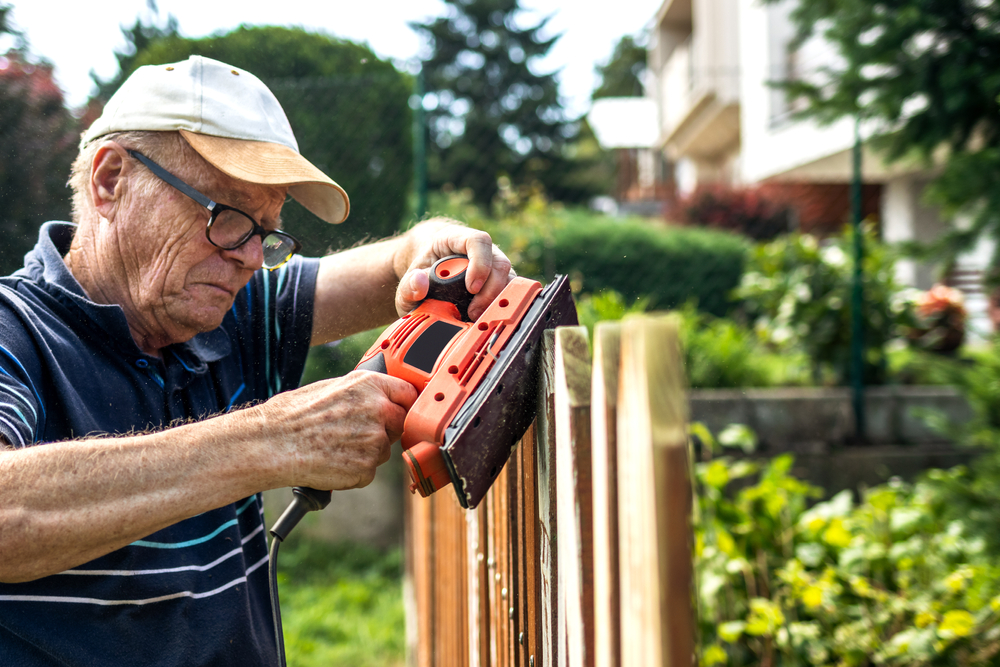Dreaming of owning your perfect home is a common aspiration, but the reality of maintaining that dream can sometimes turn into a financial nightmare. The allure of a beautiful property can overshadow potential risks and costs that aren’t immediately obvious. Before making the leap into homeownership, it’s essential to think beyond the front yard curb appeal and consider the hidden costs that could strain your budget. Here are 15 reasons why your dream home might end up costing more than you anticipate.
1. The Cost of Maintaining that Gorgeous Yard

Having a beautifully landscaped yard can be a significant selling point for a property, but maintaining it often requires more than just a weekly mow. Gardeners, pest control, fertilization, and seasonal plantings can add up quickly, turning your outdoor oasis into an ongoing expense. According to New South Homes, mature landscaping can require specialized care, which might not be covered under standard homeowner maintenance. You might find yourself spending weekends tending to the garden rather than enjoying it, especially if you’re not an experienced gardener.
Additionally, the water bill for keeping those plants lush and green can be surprisingly high. Installing irrigation systems or employing water-saving strategies might be necessary, but these come with initial costs that can take years to recoup. The cost of equipment such as lawn mowers and tools also adds up over time. Before purchasing, consider the long-term commitment to both time and money your dream yard might demand.
2. The Hidden Dangers of an Older Home

Older homes often come with charm and character, but they can also hide a plethora of hidden issues. Outdated plumbing, electrical systems, and even structural concerns can lead to hefty repair bills not seen at first glance. While a home inspection can uncover some problems, not everything is visible or apparent until you’ve lived in the home for a while. According to the Andrew Finny Team, even a thorough inspection can’t catch every potential issue.
Repairing or replacing these systems can be costly, and sometimes, parts may no longer be produced for older setups, requiring custom solutions that inflate costs further. You might also run into issues with code compliance, which requires additional updates to meet modern standards. Even if you negotiate these issues into the home’s purchase price, the inconvenience and surprise costs can quickly become burdensome. It’s crucial to weigh the aesthetic value against potential headaches and expenses.
3. The Temptation of Oversized Spaces

A large, spacious home might be appealing, but it’s crucial to consider the costs associated with maintaining and heating such a property. Larger homes can mean larger utility bills, as heating and cooling these spaces require more energy. According to the U.S. Department of Energy, homeowners should expect significant fluctuations in bills if they lack energy-efficient systems, which are costly to install. Oversized homes can also lead to underutilized spaces, which are essentially wasted square footage you pay to maintain.
Additionally, more space typically means more furnishings, décor, and upkeep. Cleaning and maintaining a large home can become a full-time job, or necessitate hiring help, further adding to expenses. Renovations and future repairs will also be costlier due to the sheer size of the home. Before stretching for that extra square footage, consider if the added space is worth the long-term financial commitment.
4. The Reality of High Property Taxes

While a dream home can offer a picture-perfect living experience, the associated property taxes can be a rude awakening. Property taxes are typically based on the assessed value of your home, which can significantly increase over time, especially if the area undergoes development or rises in popularity. Many homebuyers forget to account for this annual expense, which can climb as your home’s market value appreciates. It’s essential to research the area’s tax rates and any potential changes that could impact your budget.
In addition to regular increases, some areas have special assessments for local improvements or community services, which can further inflate your bill. These unexpected costs can lead to budgeting challenges, especially if you’re not prepared for them. If the tax rate in your dream neighborhood is particularly high, it might be worth considering whether the area’s benefits justify the ongoing cost. Balancing your dream home’s appeal with the financial realities of property taxes is critical in ensuring long-term viability.
5. The Hassles of Homeowners Association Fees

Living in a community with a homeowners association (HOA) can provide numerous benefits, such as access to well-maintained common areas and neighborhood amenities. However, these perks come at a cost in the form of monthly or annual HOA fees. Depending on the community’s amenities and maintenance requirements, these fees can be quite high, adding a significant amount to your monthly expenses. Additionally, HOA fees are often subject to increases over time, especially if the community decides to undertake large projects or repairs.
Homeowners also need to consider that HOAs can assess special fees for unplanned expenses, such as major repairs to shared structures or improvements. These additional costs can arise unexpectedly and strain your budget. Furthermore, failing to pay HOA fees or assessments can lead to penalties, legal actions, and even foreclosure in extreme cases. Before purchasing a home in a community with an HOA, it’s essential to understand the fee structure and potential for increases, ensuring it aligns with your long-term financial plans.
6. The Surprise of Rising Insurance Costs

Insurance is a necessary protection for your investment, but the costs can fluctuate dramatically based on various factors. While the initial insurance quote might seem manageable, rates can increase due to changes in the market, natural disasters, or claims history in your area. If your dream home is in an area prone to natural disasters such as floods, hurricanes, or earthquakes, you may face additional insurance requirements. These specialized insurance policies can be costly and are vital for protecting your home from specific risks.
In some cases, older homes or those with unique features may require special insurance considerations, which can be more expensive. Additionally, homes with amenities like pools, hot tubs, or other features can lead to increased liability coverage costs. As insurance rates rise, it’s crucial to budget for potential increases and reassess your coverage needs regularly. Failing to anticipate these changes can turn your dream home into a financial burden if you’re not prepared.
7. The Expense of Customization and Renovations

When buying a home, it’s common to desire personalization through renovations or customizations to suit your style and needs. However, the costs of these projects can quickly spiral out of control, particularly if you have specific tastes or high-end requirements. Even seemingly minor updates can reveal underlying issues that require extensive work, leading to unplanned expenses. It’s essential to set a realistic budget and timeline for renovations and stick to them to avoid financial strain.
Additionally, extensive renovations can also lead to increased property taxes and insurance premiums, as improvements may raise the home’s assessed value. If you’re considering significant changes, it may be beneficial to consult with professionals to understand potential cost implications fully. Keep in mind that while personalizing your home is important, overspending on updates can make it difficult to recoup your investment if you decide to sell. Balancing your desire for a customized space with financial practicality is key to avoiding a nightmare scenario.
8. The Trouble with Unavailable or Expensive Materials

The dream of owning a bespoke home with unique materials and finishes can quickly become a financial nightmare if those materials are unavailable or expensive. Market conditions can change rapidly, affecting the availability and cost of building materials and finishes. Supply chain disruptions, increased demand, or tariffs can all lead to skyrocketing prices or long delays. If your dream home requires specific materials, be prepared for potential challenges in sourcing them.
In addition to availability issues, custom materials often come with increased installation and maintenance costs. Skilled labor for specialized installations can be more expensive, and upkeep of unique finishes may require specialized services. Furthermore, if materials become obsolete or discontinued, replacing or repairing them in the future can be difficult and costly. Thoroughly researching and understanding the implications of choosing specific materials is crucial in avoiding unexpected financial burdens.
9. The Burden of High Utility Costs

A large or older home can often come with unexpectedly high utility costs, which may not be apparent until after you move in. Inefficient windows, poor insulation, and outdated systems can lead to soaring energy bills, especially during extreme weather. While energy-efficient upgrades can help mitigate these costs, they often require a significant upfront investment. It’s important to assess the home’s energy efficiency before purchasing and consider potential improvements if needed.
In addition to heating and cooling, water usage, waste management, and other utilities can also contribute to high monthly expenses. Homes with features like swimming pools, extensive landscaping, or outdated plumbing may require more resources, further increasing costs. Conducting a thorough evaluation of the home’s utility requirements and exploring opportunities for savings is essential in avoiding unmanageable bills. Budgeting for potential increases and improvements can help prevent financial strain over time.
10. The Surprise of Pest and Wildlife Issues

Your dream home might be situated in a picturesque area, but that location could come with unexpected guests in the form of pests or wildlife. Insects, rodents, or larger wildlife can quickly become a nuisance and lead to significant damage if not properly managed. Controlling these issues often requires ongoing pest control services, which can add up over time. Additionally, some problems may require costly repairs to address damage caused by these intruders.
It’s crucial to inspect the property for signs of pest issues before purchasing and to understand the area’s potential for wildlife encounters. In some regions, specific pest problems, such as termites, are more prevalent and may require regular inspections and preventative measures. The costs of managing these issues can be significant and should be factored into your budget. Failing to address pest or wildlife problems promptly can lead to extensive damage and financial headaches.
11. The Trap of Poor Resale Value

A dream home might be perfect for you, but it may not appeal to potential buyers if you decide to sell. Location, unique features, or non-traditional layouts can all impact a home’s resale value, making it challenging to recoup your investment. Additionally, market conditions can change over time, affecting your ability to sell at a favorable price. It’s essential to consider the long-term potential for resale and whether the home’s features will appeal to a broader audience.
Investing heavily in customizations or high-end features can also limit your ability to recover costs when selling. While personalization is important, it’s crucial to balance your preferences with consideration for future buyers. Consulting with a real estate professional can help you understand the property’s potential resale value and identify any potential pitfalls. Understanding the risks of poor resale value is crucial in avoiding financial difficulties in the future.
12. The Challenge of Zoning and Permit Restrictions

Owning your dream home can become a financial nightmare if you encounter unexpected zoning or permit restrictions. Local zoning laws and regulations can impact your ability to make desired changes or use your property in specific ways. Whether you’re looking to add an extension, build a pool, or start a home-based business, it’s crucial to understand the zoning requirements before purchasing. Failing to comply with zoning laws can lead to costly fines, legal battles, and the potential need to undo improvements.
Additionally, obtaining necessary permits for renovations or additions can be time-consuming and costly. Permit fees, inspections, and potential delays can all add to your project’s overall cost. Understanding the local regulatory landscape and potential restrictions is crucial in avoiding financial setbacks. Consulting with professionals and conducting thorough research can help ensure your plans align with local requirements and avoid unexpected hurdles.
13. The Surprise of Environmental Hazards

Your dream home’s location might seem idyllic, but it could be hiding environmental hazards that turn it into a financial nightmare. Flood zones, radon exposure, lead paint, or asbestos are just a few of the potential hazards that could impact your home’s safety and value. Mitigating these issues often requires specialized services and can be costly, adding unexpected expenses to your budget. It’s crucial to conduct thorough environmental assessments before purchasing to identify potential risks.
Addressing environmental hazards is not only a financial concern but also a matter of safety for you and your family. Failing to address these issues can lead to health problems and further devalue your property. Additionally, some hazards may require ongoing monitoring or maintenance, contributing to long-term costs. Taking proactive steps to identify and address environmental risks is essential in safeguarding your investment and ensuring your dream home remains a safe haven.
14. The Cost of Commuting and Transportation

While your dream home might offer a tranquil escape, its location could lead to unexpected commuting and transportation costs. Living in a remote area often means longer commutes, higher fuel expenses, and increased wear and tear on your vehicle. Public transportation options may be limited, requiring reliance on personal vehicles and further increasing costs. It’s essential to consider the ongoing expenses associated with commuting and transportation when evaluating your dream home’s location.
In addition to direct costs, long commutes can also impact your quality of life and work-life balance. Spending hours on the road can lead to increased stress and reduced time for family and leisure activities. If your dream home’s location requires significant travel for work or daily necessities, it’s crucial to weigh these factors against the benefits of the property. Understanding the full range of commuting and transportation costs is essential in assessing your dream home’s long-term financial impact.
15. The Surprise of Natural Disasters and Climate Change

Natural disasters and climate change can pose significant financial risks to your dream home, particularly if it’s located in an area prone to such events. Floods, hurricanes, wildfires, and other natural disasters can cause extensive damage, leading to costly repairs and temporary displacement. While insurance can provide some protection, coverage may not fully address all costs, leaving you financially vulnerable. It’s crucial to assess the potential risks associated with your dream home’s location and prepare accordingly.
Climate change can also impact your home’s environment over time, leading to increased utility costs, changes in property value, and new maintenance challenges. Rising temperatures, sea levels, and extreme weather events can all impact your home’s comfort and livability. Understanding the potential impacts of natural disasters and climate change is essential in assessing your dream home’s long-term viability. Taking proactive measures to mitigate these risks can help protect your investment and provide peace of mind.
This article is for informational purposes only and should not be construed as financial advice. Consult a financial professional before making investment or other financial decisions. The author and publisher make no warranties of any kind.








